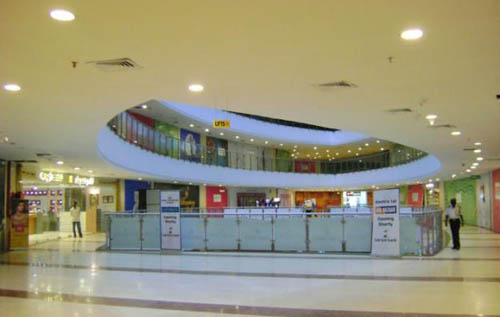 Jones Lang LaSalle has a new report, Redefining Retail Investment, to coincide with the International Council of Shopping Centers (ICSC) 2012 Retail Real Estate World Summit, taking place in Shanghai this week.
Jones Lang LaSalle has a new report, Redefining Retail Investment, to coincide with the International Council of Shopping Centers (ICSC) 2012 Retail Real Estate World Summit, taking place in Shanghai this week.
The report confirms that in the last decade, more than US$1 trillion of retail real estate has been traded around the world. Global direct investment has averaged more than US$100bn per year since 2004 and in 2011 annual volumes hit US$122.5bn.
In 2011 cross-border activity accounted for nearly half of all retail investment whilst levels accounted for only one-quarter of all trade in 2004. Cross-border activity will continue to track at around half of all retail investment, boosting annual investment volumes to US$160-180bn by 2020, representing a 30-50 percent increase on 2011 levels.
Arthur de Haast, Head of International Capital Group, Jones Lang LaSalle said, “The number of investable geographies has expanded globally as growth markets like China, Brazil and Turkey are attracting global investors. Together with an improvement in the quality and availability of retail assets, rising liquidity levels and further progress in real estate transparency, the retail investment sales sector is set for further rapid globalisation.”
Michael Niemira, ICSC Vice President of Research and Chief Economist said, “Many of these growing retail real estate investment opportunities – identified by the Jones Lang LaSalle report – also are being supported by an increasing number of countries adopting real estate investment trust (REIT) investment vehicles. The REIT, which provides transparency and ease of investment, has grown dramatically over the last 40 years with 27 countries already offering such financial regimes and currently another seven -China, India, Indonesia, Nigeria, Kenya, Vietnam and South Africa – considering future adoption. The ease of access to cross-border and domestic capital and strong consumer fundamentals should provide a solid platform for the growing global retail real estate markets over the next decade.”
There will be a general rebalancing in capital flows towards the Asia Pacific region, due to favourable demographics and the growth of the middle class. By 2020, Asia Pacific is forecasted to account for 26 percent of global retail investment volumes, up from 22 percent currently and from only 11percent in the mid-2000s.
The report projects that the Americas will hold onto around 33 percent of volumes between now and 2020, whilst EMEA will take around 41 percent (compared to 45 percent currently).
In light of this trend, institutional capital is seeking greater retail exposure as it taps into favourable global demographics and growing ‘consumer classes’, and is attracted by the sector’s defensive qualities during times of uncertainty. This is witnessed in the growing contribution of retail to total commercial real estate investment, from 19 percent in 2007 to nearly 30 percent in 2011.
Retail’s overall contribution to total real estate investment is set to remain at close to 30 percent over the remainder of the decade, as institutions and private investors seek to tap into the growth potential of expanding consumer markets.
The report also introduces the Retail Real Estate Momentum Index, which lists the top 20 countries with the strongest momentum in retail real estate. China and India sit at the top of the list, though South East Asia and Latin American nations also feature well.
“The Indian retail sector is in a dynamic state of re-invention, with the initial hit-and-miss approach based on perceived absolutes rapidly giving way to superior malls, more business-conducive locations and better business models,” says Anuj Puri, Chairman & Country Head, Jones Lang LaSalle India.
“We are able to track these positive market modifications by the way in which demand for retail real estate is changing in India. There is a clear thrust towards international benchmarks, with growing market knowledge and ever-increasing aspirations driving current and future growth. That said, the sector is still hamstrung by restrictive foreign investment policies which are reining in the country’s potential for attaining faster growth,” Puri added.
Commenting on the Index, David Hand, Head of Investment for China, Jones Lang LaSalle said: “There is no doubt that China offers an enticing and exciting proposition to investors globally. Not only is it set to become the world’s largest consumer market, but China is projected to be a US$15bn a year retail real estate investment market by 2020. The investment landscape will become more globalised, fuelled by a burgeoning middle class, rapid urbanisation, strong consumption growth and significant expansion of quality retail infrastructure. It is definitely the one to watch this decade.”
INDIA PERSPECTIVES:
Our Retail Real Estate Momentum Index identifies 20 markets with the strongest retail real estate momentum. In top positions are China, India, Indonesia, Turkey, Brazil and Vietnam.
Investors, developers and shopping centre operators are seeking to tap into the favourable demographics of ‘Growth’ and ‘Emerging’ markets, where a combination of rapid urbanisation and expanding middle classes provide a compelling growth opportunity, particularly in the larger economies of the BRIC (Brazil, Russia, India and China) and MIST (Mexico, Indonesia, South Korea and Turkey) countries.
Rates of retail floor-space expansion in China and India are around 15% per year, and 11% in Brazil.
In terms of FDI into retail, India is a notable absentee among the BRIC countries, where government policy regarding foreign direct investment into real estate, and particularly retail real estate, has stunted any potential investment market over the last few years.
Retail Real Estate Momentum Index – China and India, unsurprisingly, top the Index, due to their favourable demographics, rapid urbanisation, strong consumption growth and significant expansion of modern retail infrastructures; their shopping centre stocks are projected to grow by around 15% per year through to the end of the decade. India falls short of China due to weaker real estate investment momentum and a smaller international retailer presence.
India will remain a two-paced market. From a retailer perspective, the country is clearly a key destination and although the retail market is yet to open fully to international retailers, when it does, major international retail groups will expand rapidly across India; well-located, well-managed, prime shopping centres will be major beneficiaries of such expansion.
However, from a retail investment point of view, it is still unlikely that India will see a boom in foreign investment in the short to medium term. Although the fundamentals are firmly in place, the regulations are such that both the entry and exit options are extremely limited.
The lack of clarity around potential exit options also means that major foreign developers are hesitant to enter the market. While the government could eventually ease such restrictive policies, it is probable that foreign groups will continue to focus their emerging markets’ strategies elsewhere in the short to medium term.





